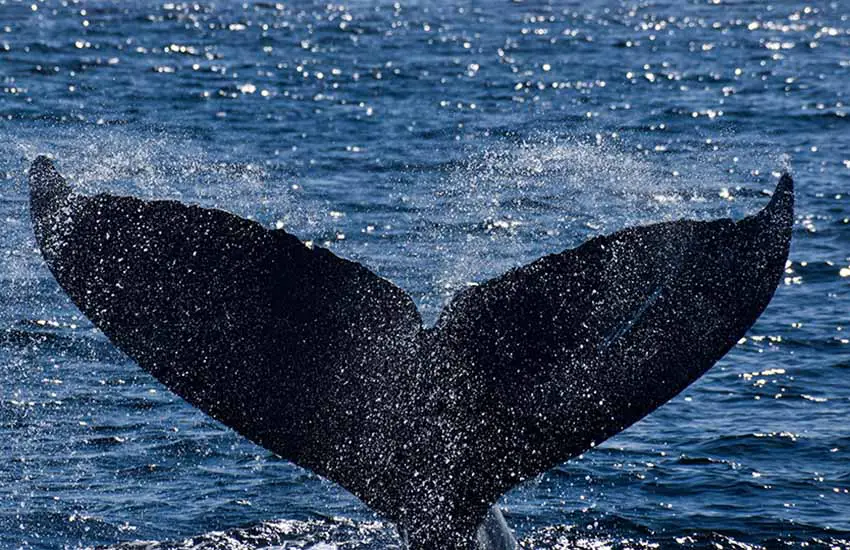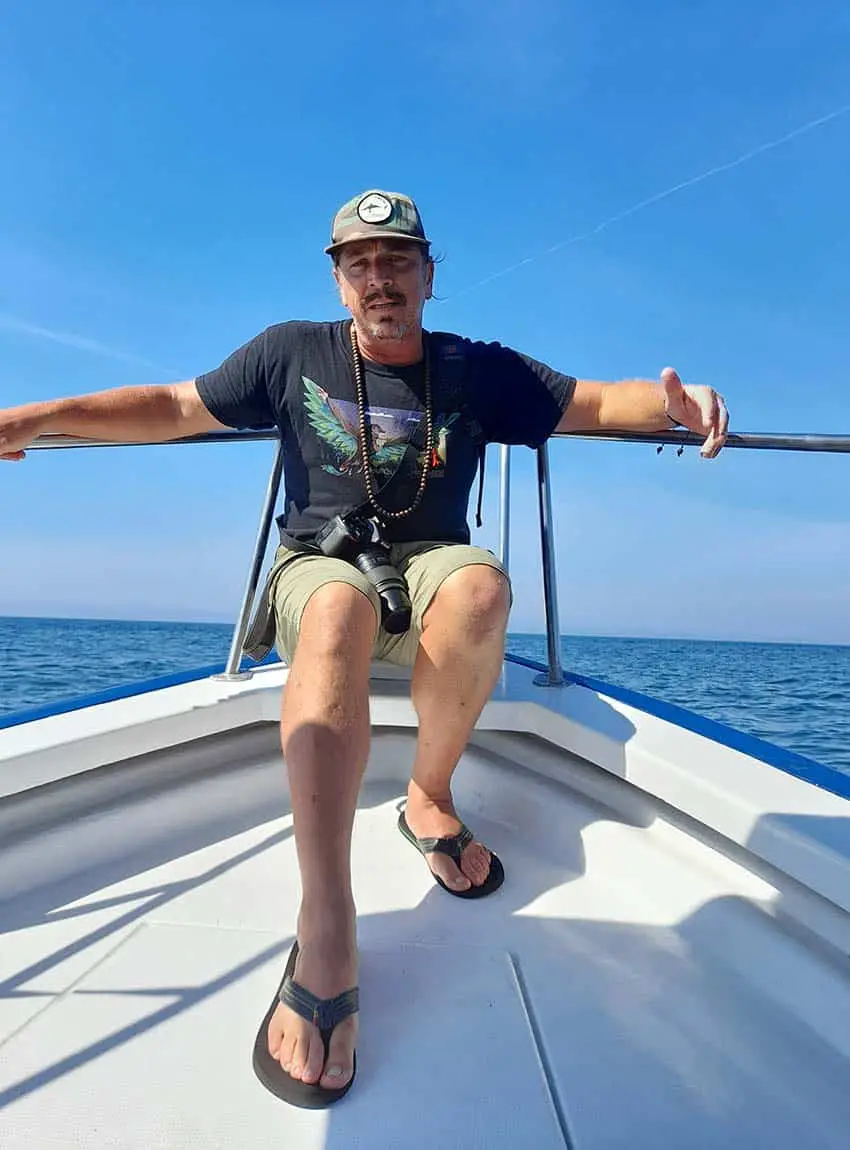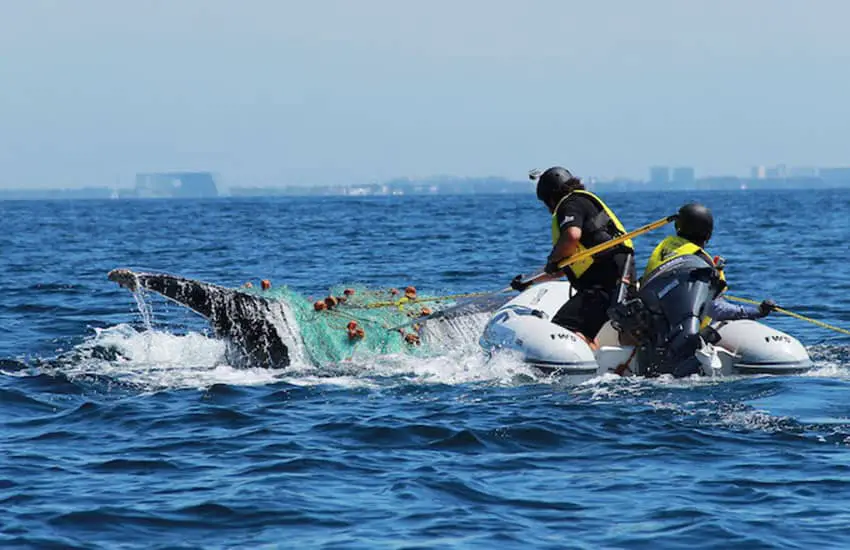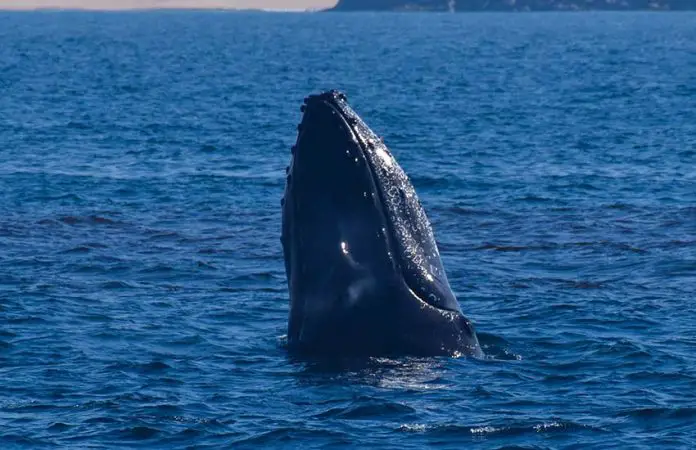One of the most thrilling adventures on the Pacific coast of Mexico is whale watching — and thanks to the growth in ecotourism, these days, you can combine your trip with whale conservation education.
I recently took a whale watching expedition with a group of researchers from the ecotourism company Onca Explorations in Mazatlán. The founder of Onca, Oscar Guzon, is a marine biologist and lead researcher.
Humpback whales are fascinating to watch, and their behavior is constantly changing. At a length of 46 to 56 feet and weighing as much as 40 metric tons, these gentle giants are powerful but graceful. Their flamboyant acrobatics make them the entertainment superstars of the whale world.

Our expedition wasn’t far from shore when we spotted our first whales frolicking in the water. We locate them by scanning the horizon for plumes of mist erupting from the surface, which occurs when a whale comes up to breathe.
Mazatlán is one of the breeding grounds for humpbacks along the west coast of Mexico.
“The larger whale is female; the smaller one is male,” Guzon tells me. “Whales are very playful, and this may be part of their mating ritual.”
We spot two bulls — male whales — rapidly approaching the happy couple from a distance. They are much larger than the smaller male.
“We may see some head-butting,” Guzon warns, “which the smaller one will certainly lose.”
The two bulls attempt to insert themselves between the couple. After several attempts, they finally give up as it becomes clear the female is not interested in either of them.

Soon afterward, we are surrounded by whales. The researchers are all busy gathering photographic evidence, using cameras fitted with telescopic lenses. One whale lifts its head vertically out of the water right next to the boat — known as spyhopping — to check out the surroundings. Guzon assures me there’s no threat.
“It’s just curious,” he says. “Whales are very curious creatures.”
During a break in the action, he explains to me that the photographic evidence is how they track the whales and monitor their behavior.
“We are trying to get good photos of the flukes [the right and left sides of the tail],” he says.
“Flukes have distinctive markings unique to each whale that are used to identify them. No two whales have the same markings,” he explains. “Through a process of capture-recapture with other researchers all along the west coast of Mexico, from Baja to southern Oaxaca, we share information on sightings.”
As we head back to shore, Guzon tells me that they photographed 16 distinct whales. “It was a very good whale day,” he says with a big smile. The excitement of the entire crew at seeing and capturing photos of so many whales in one day was infectious.

The researchers then take the photographic evidence they have collected and match it to photos that they and other researchers have compiled in large digital catalogs. In this way, they can track migratory patterns, frequency of the sightings and other behavioral patterns for each identified whale.
One of the larger catalogs on the Mexican Pacific coast — the FIBB catalog — has been compiled by Puerto Vallarta’s Ecologia y Conservación de Ballenas (Ecobac) through their Humpback Whale Photoidentification Project.
Ecobac marine biologist Astrid Frisch Jordan tells me that since its inception in 1996, FIBB has grown to include 3,183 photo IDs.
One of the things that her organization has discovered is that climate change has altered the migratory route and behavioral patterns of some humpbacks.
“Although their primary feeding grounds are off the coast of California, Oregon and Washington state, we are now seeing them feed in Banderas Bay [Puerto Vallarta] and staying longer to feed off the coast of California,” she says. “Now they are feeding wherever they can find food.”
Ironically, whales may play a critical role in efforts to reduce the effects of climate change. One whale can sequester up to 33 tons of carbon dioxide. These marine mammals also ensure a healthy abundance of phytoplankton; the microscopic plant captures CO2 from the atmosphere and produces oxygen.

The good news is that the humpback whale population is growing. During the 20th century, their numbers dropped almost 90%. But when the International Whaling Commission banned commercial humpback whaling in 1986, the population soared.
But these animals still face threats today — mostly man-made.
“Entanglement in nets, Jet Skis, boat collisions, noise pollution, throwing single-use plastic products into the ocean and in any way impeding their natural movement threatens their survival,” Frisch told me.
As coordinator of RABEN (The Attention Network for Entangled Whales), Frisch works with other inter-institutional teams trained to rescue whales entangled in fishing gear. She also works with Ecotours de Mexico and promotes ecotourism as one way to educate the public on humpbacks and conservation efforts.
Mexico’s Ministry of the Environment and Natural Resources (Semarnat) issued mandatory whale watching regulations in 2010, but “Many people aren’t aware of the regulations or don’t pay attention to them,” Frisch says.
The regulations are very detailed, including what activities are prohibited, distance at which whales can be observed, maximum boat speed allowable and the number of boats that can observe a group of whales at one time.

Semarnat also provides training and certification annually for whale watching companies which can be revoked if a company doesn’t follow the regulations.
Ecobac lists three basic commonsense rules for whale watching:
- Cause the least possible impact on the whales
- Be patient
- Watch whales only with boats or companies with Semarnat certification
Frisch emphasizes the third rule as a way to be certain the tour leaders have received training and are properly following whale safety regulations.
- To book a whale-watching expedition or explore other activities provided by Onca Explorations in Mazatlán, visit their website. In Puerto Vallarta, to find out about whale watching and other nature encounters with Ecotours de Mexico, visit their website.
Sheryl Losser is a former public relations executive and professional researcher. She spent 45 years in national politics in the United States. She moved to Mazatlán in 2021 and works part-time doing freelance research and writing.
